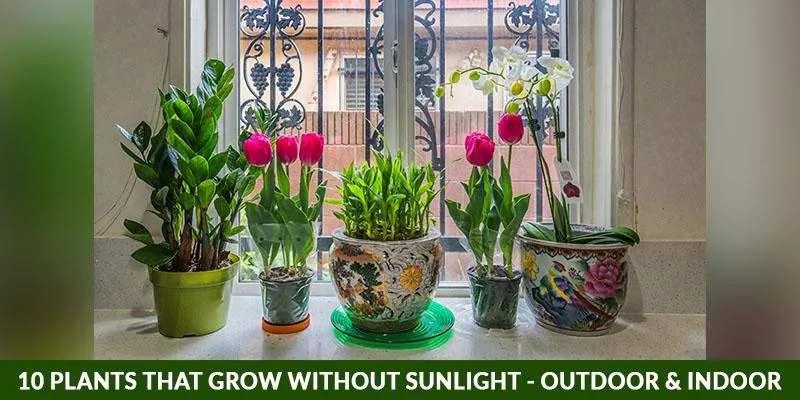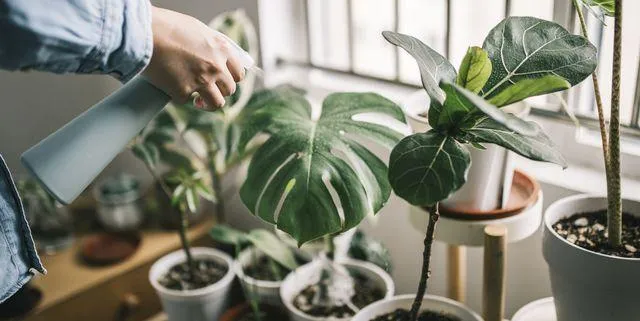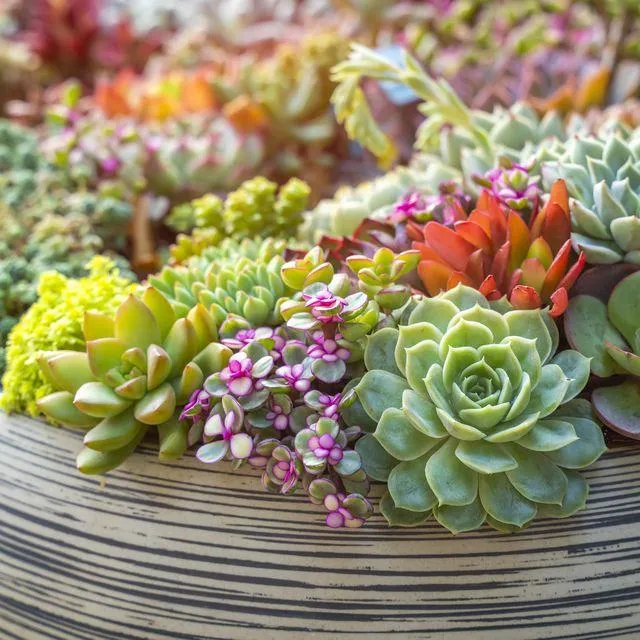The Best Small Flowers to Grow Indoors Year-Round
Whether you want a pop of color on your desk or kitchen windowsill, growing small flowers inside is a great way to bring beauty into your home without taking up much space. As someone who has struggled with keeping plants alive, I know the challenges of indoor gardening. In this article, I’ll share my top picks for the easiest small flowers to grow indoors, along with tips for giving them the care they need to thrive.
Low-Maintenance Flowering Houseplants
Some of the most foolproof small flowering plants for indoor growing are actually classified as houseplants. Their sturdiness and adaptability make them great options even for brown thumbs like me!
- Peperomia: With their neat, succulent-like appearance, peperomias come in an amazing variety of leaf textures and colors. They bloom tiny white flowers periodically and are basically impossible to kill. Just water when the soil is dry.
- African violets: These tempting, tray-sized plants blossom with purple, pink or white flowers. Give them ample light and keep the soil slightly moist. Pinch off spent blooms to prolong flowering.
- Kalanchoe: These cheerful plants produce clusters of bright red, orange or yellow flowers. Kalanchoes tolerate cool drafts and thrive on neglect. Just water sparingly in winter.
Long-Blooming Annuals
If you want flowers that last throughout the year, try growing these from seed to enjoy successive blooms:
- Petunias: Their trailing habit makes petunias perfect for hanging baskets or pots. I find the multicols especially floriferous. Give them full sun for maximum colorful blooms.
- Begonias: With lush green leaves and dangling flowers in shades of pink, red and white, begonias brighten any windowsill. Keep the soil moist and protect from hot sun.
- Geraniums: These cheerful plants come loaded with small pom-pom blooms in summery hues. Snip off deadheads for repeat flowering. Geraniums thrive in a bright spot.
Fragrant Flowering Herbs
Not only are herbs beautiful, but their flowers are often strongly scented too. Try growing these dual-purpose plants:

- Lavender: Nothing beats lavender’s relaxing perfume. The gray-green foliage and violet flowers work well in containers or as a tabletop plant. It’s drought-tolerant once established.
- Rosemary: With needle-like leaves and pale blue flowers, this classic herb makes a handsome, aromatic accent. Provide well-draining soil in a sunny spot.
- Mint: Who doesn’t love the fresh scent of mint? Select a compact variety like ‘Chocolate’ mint for indoor growing. Watch out, it can be invasive!
Tiny Bloomers Perfect for Desktop Gardens
If space is ultra-limited, try one of these petite flowering gems:
- Moss roses: Their mini rosebuds and fuzzy green foliage make moss roses adorable tabletop plants. Treat them like succulents, watering infrequently.
- Heliotrope: With purple, violet or white blooms emanating a delicious vanilla scent, helitrope is a sweet pick. It thrives in filtered light.
- Scaevola: Also called the fairy fanflower, scaevola bursts with dainty pink blooms. A single plant or well-draining pot is best.
No matter which small flowering plant you choose, keep the growing conditions it prefers in mind. Most will do well in medium to bright indoor light and average household temperatures. Be sure the pot has good drainage, and use a well-draining potting mix. Water when the top inch of soil is dry.
Speaking from experience, overwatering is one of the biggest issues for indoor flower growers. Go a bit on the dry side to discourage root rot. Mist plants occasionally if foliage looks parched. Regular fertilizing every few weeks during spring and summer growing seasons helps boost blooms.
With a little TLC, any of these low-maintenance bloomers could become treasured indoor companions. They’ll pump positive vibes into your space with floral eye candy that lasts the whole year round. Give one or two of the easier options a try – I think you’ll be pleased how pretty they make your home feel, even if you’ve struggled with plants before!

Let me know if you have any other questions. I’d be happy to share more tips based on basically killing or bringing back seemingly “dead” plants many times, so don’t lose hope if yours look a little rough at first. With patience and care, your green thumb skills will grow for sure.
Small Flowers to Grow Indoors
| Flower | Bloom Time | Water Needs | Light Needs | Size |
|---|---|---|---|---|
| African Violet | Year-round | Moderate | Bright indirect light | 6-12 inches tall |
| Moth Orchid | Spring-summer | Moderate | Bright indirect light | 6-12 inches tall |
| Peperomia | Spring-summer | Allow soil to dry slightly | Bright indirect light | 6-12 inches tall and wide |
| Snake Plant | Spring | Allow soil to dry out between waterings | Low to medium light | 2-4 feet tall |
| Pothos | Spring-fall | Allow soil to dry slightly between waterings | Low to bright indirect light | Trailing vine, can grow several feet long |
FAQ
-
What small flowers are easy to grow indoors?
Some simple flowers that sort of thrive indoors are pothos, peace lilies, and english ivy. These plants basically don’t need a ton of light or care.
-
How much sunlight do indoor flowers need?
Most small flowers need at least some sunlight each day to photosynthesize and stay healthy. However, not all plants need the same amount of light—some can get by with just a few hours near a sunny window while others prefer super bright areas. It appears trial and error is the best way to see what kind of sunshine your flowers like.
-
What soil is best for indoor plants?
Many indoor plant owners use a potting mix specially formulated for houseplants. These soils tend to drain well so the roots don’t get soggy, and contain decent nutrients to feed the plants for months. You could also make your own mix by combining compost, perlite, and vermiculite. Basically any soil that dries out reasonably fast between waterings should work okay.

-
How often should indoor flowers be watered?
The frequency of watering your indoor flowers depends on quite a few factors—the size of the plant, type of soil, and amount of sunlight it receives. As a general rule of thumb, potted plants like small flowers enjoy moist but not soaked soil. You might have to water every few days in the summer but more like once a week in the cooler months. The old “stick your finger in the dirt” test never fails!
-
What’s the easiest indoor flower to care for?
English ivy and pothos are kinda like the legendary houseplants that are nearly impossible to kill—they basically thrive on neglect! These flowers don’t need more than an occasional watering and can even tolerate very low light. Perhaps they’d be the best choice for amateur indoor gardeners just starting out. On the other hand, peace lilies are also super forgiving yet add a touch of jungle vibes to a room.
-
Do indoor flowers need fertilizer?
Most flowering plants appreciate an occasional feeding to stay healthy and bloom continuously. Nevertheless, infrequent applications are usually sufficient—say every few months in the growing season. A general houseplant fertilizer that’s diluted to half or quarter strength does the trick. You can also make a natural plant fertilizer by steeping comfrey or herb clippings in water for a few weeks. Basically a little nutrient boost goes a long way.
-
How do I get my indoor flowers to rebloom?
Many flowers are triggered to reflower by changes in light, temperature or the length of the daylight period. To restart the blooming cycle, try moving your plant to a cooler spot with less light for about 8 weeks. Some gardeners swear by simulating winter conditions to tricks plants into reblooming again come spring. Another thought is pruning off old blooms regularly so the plant puts energy into forming new buds. I guess there’s no harm in attempting these flower fooling techniques!

-
Is growing indoor flowers difficult?
If you choose low-maintenance flowers and pay attention to their basic requirements for light, water and pest control, indoor blooming plants are quite manageable. Sure, factors like hard water, dry air or neglect can spell doom—but with a little care, small flowers can thrive quite easily on kitchen tables and office desks for a welcome natural splash indoors. Basically, don’t sweat the small stuff and enjoy watching your tiny garden grow!
